

 |
 |
|
| |
||
|
Vol. 8 No. 7 WE COVER THE WORLD Tuesday January 20, 2009 |
|
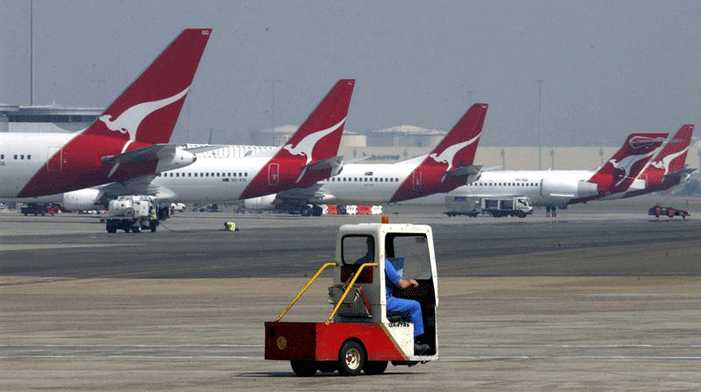
Since September 2001, the Australian
Government has spent over $740 million on enhancements to aviation security,
part of the overall homeland security funding package of $6 billion for the
years 2001-2012.
It has allocated some of these funds for improvements
to air cargo security, using initiatives such as the introduction of explosive
trace detection equipment, and implementing trials to test a variety of emerging
explosive-detection technologies to assist examination of air cargo.
Spending on port and harbor security is averaging
$50 million annually, after higher years previously, as a result of large injections
of government funds in the wake of 9/11.
Many enhancements are already in place, such as
increased policing, staff screening and identification, improved intelligence
resources, and higher numbers of surveillance devices, particularly cameras.
Government, privately-owned ports airports, and
airlines, are meeting cost of greater security at Australia’s borders.
Following current trials of technology and equipment,
and subsequent adoption, it is anticipated that annual spending will increase,
with attendant opportunities for non-Australian suppliers.
Names such as Lockheed Martin, Rapiscan, L3 Communications,
AS&E, and GE lead the field. The situation is still evolving.
Exciting new areas such as remotely operated surveillance
vehicles and advanced scanning methods will keep the market active and interesting.
Ports and ocean freight account for 99 percent
of Australia's trade by volume and 76 percent by value.
Screening of containers arriving by sea, however,
takes place in low proportions.
This compares with Australian Customs air cargo
inspection of over 70 percent.
The Australian Government is evaluating technology
and equipment to enable much higher rates of container screening.
Australia’s increased security in the maritime
industry has concentrated on security regulated port and ships rather than addressing
supply chain security, which the Federal Government considers a more difficult
issue.
The Australian Customs Service is beginning to
consider various initiatives to enhance the security of the supply chain.
The air cargo sector accounts for approximately
300,000 tons of export airfreight annually, with a value of $15 billion dollars.
The domestic air cargo sector accounts for approximately
200,000 tons of domestic airfreight each year.
Inspection rates for air cargo are higher than
seaborne containerized freight.
The maritime industry is implementing a Government
objective to x-ray seven percent of import containers.
It is also improving security capabilities at
the ports of Launceston, Darwin, Townsville, and Newcastle to bring them into
line with major facilities in Brisbane, Sydney, Melbourne, Adelaide and Fremantle.
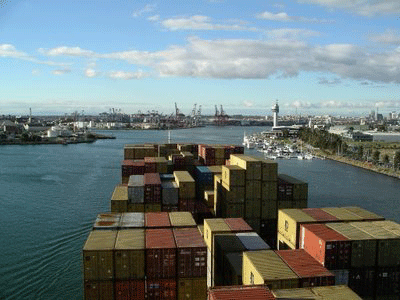 Maritime
Security
Maritime
Security
Following the attacks of 9/11, the international
community resolved to implement a system to secure the maritime transport sector
against the threat of terrorism.
The International Ship and Port Facility Security
(ISPS) Code was developed through the International Maritime Organization (IMO)
in December 2002.
Australia also introduced a number of measures
to increase maritime security.
In 2003, the Australian Government developed its
own Maritime Transport Security Act to implement the ISPS Code in Australia.
The Act came into effect in 2004.
In 2004, an Australian Taskforce on Offshore Maritime
Security identified the need to regulate the security of Australia’s strategically
important, and vulnerable, oil and gas industry.
This resulted in the Maritime Transport Security
Act becoming the Maritime Transport and Offshore Facilities Security Act.
The Act requires all security regulated ports,
port facilities, offshore facilities, and ships to undertake risk assessments,
and to implement security plans to address identified risks posed by deliberate
threats.
These entities must prepare and implement a maritime
security plan, and provide information on their security measures to other industry
participants conducting operations within security-regulated ports.
All maritime workers now undergo a background
screening process before being issued with maritime security identification
cards.
Port corporations are increasing port security
and safety in the areas of physical safety of vessels, both in transit and at
moorings; electronic surveillance; anchorages, and berthing.
Before ships can enter Australian ports, they
must supply comprehensive details, including the vessel’s name; route
information; cargo (if hazardous); displacement, propulsion, and contact details
of both the shipping agents and stevedores.
There has been an increase in the use of database
and security management systems to process and store the information.
Port authorities are interested in vessel tracking
systems, with the Sydney Ports Corporation pioneering the use of a Vessel Traffic
Service for its harbor zones.
Bidding for the system closed in December, and
Sydney ports have conducted trials with several potential suppliers systems,
including an American-made system.
Aviation
Both government and industry share the responsibility
of aviation security in Australia, including air cargo.
The Aviation Transport Security Act 2004 and the
Aviation Transport Security Regulations 2005 apply to specific airport operators,
aircraft operators, regulated air cargo agents and occupiers or controllers
of an airport area.
The Act and the Regulations require aviation industry
participants to maintain approved Aviation Transport Security Programs, which
must detail how the participants will manage security for their operations.
Aviation security safeguards Australia's civil
aviation operations against "acts of unlawful interference".
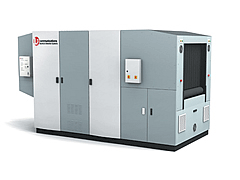 The
Minister for Infrastructure, Transport, Regional Development and Local Government,
and his Department, are responsible for the development and implementation of
a national framework of consistent aviation security measures.
The
Minister for Infrastructure, Transport, Regional Development and Local Government,
and his Department, are responsible for the development and implementation of
a national framework of consistent aviation security measures.
Australia’s 186 security-controlled airports
must have security measures in place, including means of ensuring that only
authorized people may enter secure areas of the airport. Aviation Security Identification
Cards are required to obtain unescorted access to the secure areas of security-controlled
airports that have regular public transport services.
The airports must maintain a plan—a “Transport
Security Program”—which outlines the security risks at the airport.
Of the 186 security-controlled airports, 147 regional
airports have no additional specific requirements beyond those imposed on the
group as a whole – i.e., protecting secure areas and having a Transport
Security Program.
Screening of either passengers or property is
not compulsory at these airports.
On March 31, 2007, the Australian Government introduced
enhanced security measures to limit the amount of liquids, aerosols, and gels
that can be taken through screening points at airports. Additionally, the Government
is currently trialing new methods of detecting weapons, explosives and other
prohibited items.
Some of the technologies being trialed include
detection of potentially explosive liquids, aerosols and gels carried by passengers
on civil aircraft.
On December 1, 2007, checked baggage screening
by handheld explosive trace detection equipment commenced at Australian regional
airports receiving regular jet air services.
All regular passenger and charter aircraft with
30 seats or more must be fitted with hardened cockpit doors.
The Australian Government fully funds implementation
of this measure on non-jet regional aircraft.
Further
Developments
The Australian Government is trialing new ways
of detecting weapons, explosives and other prohibited items.
Some of the technologies now being trialed include
explosive detection in liquids, aerosols and gels carried by passengers on civil
aircraft.
The Government is working to strengthen and examine
security arrangements for the transport of dangerous goods, with a focus on
various types of explosives, flammable gases and liquids, toxic substances,
oxidizing agents, and ammonium nitrate.
Australian Customs now has more than 1,400 closed
circuit television cameras in operation at Australia’s key international
airports.
The Airports National Monitoring and Analysis
Center, located in Melbourne, enables Customs officers to monitor, and remotely
record airport camera feeds from Brisbane, Sydney and Melbourne Airports, 24
hours a day, seven days a week.
A number of new technology projects have received
funding in recent years to enhance maritime and aviation security.
These projects include:
•
New technology for chemical detection including: raman spectrometers, gas chromatograph-mass
spectrometers, ion mobility spectrometers, and immuno-assay trace detectors,
•
Advanced automatic x-ray machines at the Sydney Gateway Facility and the Melbourne
Airmail Transit Centre, including metal-detection technology for general mail
items.
•
Extension of waterfront closed circuit television network, extending the existing
waterfront system from 32 proclaimed ports to all 63 proclaimed ports.
•
A field trial of neutron scanning technology, developed by the Commonwealth
Scientific and Industrial Research Organization, capable of scanning air cargo
containers.
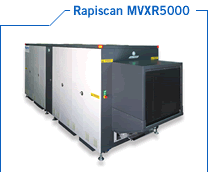 During
October/November 2008, the Australian Government conducted a trial of new X-ray
security scanners at Sydney, Melbourne and Adelaide airports.
During
October/November 2008, the Australian Government conducted a trial of new X-ray
security scanners at Sydney, Melbourne and Adelaide airports.
The X-ray technology allows screeners to detect
non-metallic devices, objects and weapons concealed on a person's body.
The Department of Infrastructure, Transport, Regional
Development and Local Government is correlating and evaluating results.
Australian receptivity is high for foreign-origin manufactured equipment.
The extensive research and development conducted
by various companies following September 11, 2001 has resulted in the development
of technology that is critical to Australia’s security.
During the years 2001-2012, Australia will spend
over $6 billion on homeland security initiatives prompted by the increased threat
of a terror attack.
This report is general in nature and covers a
range of sector equipment used to increase security of Australia’s ports
and airports.
Some of the funds have been allocated to increased
inspection capacity at seaports; air security officer programs (marshals); increased
intelligence and communications capacity; an increase in personnel, and replenishment
of the national medical stockpile ($110 million).
Yearly Australian Federal Budget allocations for
overall security largely determine the market demand and value for port and
harbor security. According to budget statements, most of the 2008-09 funding
in the area of national security sets out to continue or enhance existing programs,
rather than initiate any new ones.
The 2009-09 budget includes a large proportion
for manpower increases, with the forecast expenditure mostly over a period of
years. Funding measures, which continue or enhance existing programs or capabilities
include (today’s currency conversion):
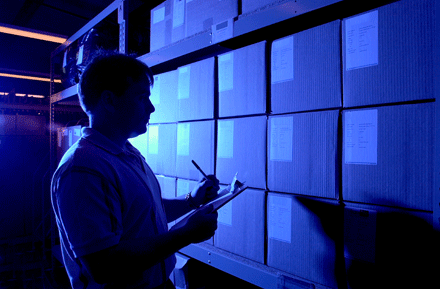 •
$16 million over five years to develop a recruitment and retention program within
the Australian Federal Police
•
$16 million over five years to develop a recruitment and retention program within
the Australian Federal Police
•
$5.5 million over four years for the continued provision of intelligence support
to Australia’s response and law enforcement operations against illegal
foreign fishing in the Southern Ocean
•
$700,000 million in 2008–09 for Customs to continue aerial surveillance
of Australia’s northern waters
•
$23 million over two years to keep the Customs vessel ‘Triton’ on
patrol in Australia’s northern waters
•
$10 million over four years for Customs to increase inspection and examination
of containers in Launceston, Darwin, Townsville and Newcastle
•
$5.5 million in 2008–09 to continue the Air Security Officer program.
Innovative security equipment is a high priority.
The Australian Government considers present port security measures adequate.
It is committed, however, to continually examining
new ways to improve security procedures.
The Office of Transport Security in the Department
of Infrastructure, Transport, Regional Development and Local Government oversees
trials of new technology and equipment.
In response to constantly evolving and emerging
threats, the Government is evaluating available technologies for use in Australian
airports.
It has been conducting trials on advanced technologies
for carry-on luggage X-ray, body scanners and liquid explosive detectors.
The purpose of the trials is to determine possible
approaches to aviation security screening technology.
Some of the technologies are currently in use
in the United States.
•
Sydney Airport's international screening point will use an AS&E X-ray backscatter
body scanner, and an L3 X-ray for carry-on luggage.
•
Melbourne domestic airport (Tiger Airways) screening point is trialing a Rapiscan
X-ray backscatter body scanner, an Ahura liquid detector, and a Rapiscan X-ray
for carry-on luggage.
•
Adelaide's main screening point is trialing an L3 millimeter wave scanner, a
Smiths x-ray for carry-on luggage, and a Chinese-manufactured, NuTech Computed
Tomography/Digital Radiography bottle scanner.
Trials concluded November 30, 2008, with performance
reports expected in the first quarter of the 2009.
Once results are known the Department of Infrastructure,
Transport, Regional Development and Local Government will make recommendations
to the Government.
The Government will then make an informed choice
as to whether or not to implement the technologies over a period of time.
According to the Department, it will not make
results available to the general public.
Should decisions be made to implement any of these
technologies, the Department will hold further consultation with interested
stakeholders. Individual aircraft owners who are not required to develop and
implement security programs, will determine practical measures to mitigate the
risk of theft in the general aviation sector.
These measures include fitting auxiliary locks
– for example to propellers or propeller controls, securing aircraft in
hangars, or aircraft door locks. The Australian Department of Defense is interested
in harbor protection systems for its naval facilities.
Navy Fleet Headquarters, Sydney, is conducting
the study, to determine which harbor protection systems would be the most suitable.
In 2007-08, Australia’s three major trading
partners in terms of the import value of goods were the EU, the U.S., and China.
The top three destinations in terms of the export
value of goods were Japan, China, and the EU.
A total of 798 million metric tons of international
freight moved through Australian ports and airports.
After seven years of testing border control biometrics,
Australian Customs Service will introduce the “SmartGate” processing
system at every Australian international airport by June 2009.
SmartGate uses facial recognition biometrics for
border control, which Customs considers necessary because of an expected major
increase in travelers entering Australia.
The SmartGate system will involve placing e-passports
on a scanner at a kiosk, which unlocks and reads data stored on the embedded
chip.
The stored data passes through a scanning station
where the system checks data associated with the ticket against biometric data
collected from the person.
Currently, New Zealand is the only other country
able to use Smartgate.
The Australian Government considers it necessary
to develop local expertise to improve security at both ports and airports.
For example, it is conducting trials of new freight
screening technology to assess its suitability for use within the Australian
aviation sector (see above).
Australian Customs will construct a facility in
Brisbane to trial world-first, non-intrusive neutron technology, developed by
the Commonwealth Scientific and Industrial Research Organization.
The system will facilitate rapid detection of
explosives and other threats in air cargo more effectively than conventional
x-ray systems.
The technology will be capable of scanning an
airfreight container in less than two minutes.
The Australian Government will place additional
personnel resources at major airports to ensure effective intelligence collection,
dissemination and liaison.
It will also develop an aviation security information
collection and dissemination capacity in the South East Asia and Pacific regions.
The Australian Government will conduct trials
of new airport security scanning systems, assisted by scientists from the Australian
Nuclear Science and Technology Organization, including performing technical
tests on designated X-ray equipment.
The Defense Science and Technology Organization
(DSTO) is assessing other scanning devices, such as those that use radio waves.
Those trials officially commenced in the middle of October 2008 continued until
the end of November.
DSTO has recently opened a new facility at the
Australian Technology Park in Sydney, where it is researching advanced simulation,
and developing state-of-the-art equipment to assess security risks at seaports
and develop measures to counteract threats.
It is using visualization software representing
major ports and harbors, to scan for security weaknesses and improve situational
awareness. The Commonwealth Scientific and Industrial
Research Organization worked recently with Chinese Nutech Company to develop
a new air cargo scanner, which is being trialed at Brisbane International Airport.
The equipment consists of neutron and x-ray scanning,
providing material specific images. Following a successful initial trial, plans
are in place to produce the first commercial unit in Beijing. Beijing Zhongdun
Anmin Analysis Technology Co offers its FISCAN x-ray scanning equipment through
an Australian distributor.
The UK-based company Smiths Industries has scanning
equipment installations at Australian airports, and it is participating in scanning
trials at Adelaide Airport.
Among the U.S. technology and equipment suppliers
who are actively focused on homeland security in Australia:
•
Lockheed Martin is bidding on a vessel traffic management system for Sydney
Ports.
•
Rapiscan, through its Australian subsidiary, won a recent tender to supply six
regional Australian airports with its automated hold baggage screening systems.
•
L3 Communications has equipment installed at Australian airports.
•
AS&E has equipment in trials.
Gordon Feller